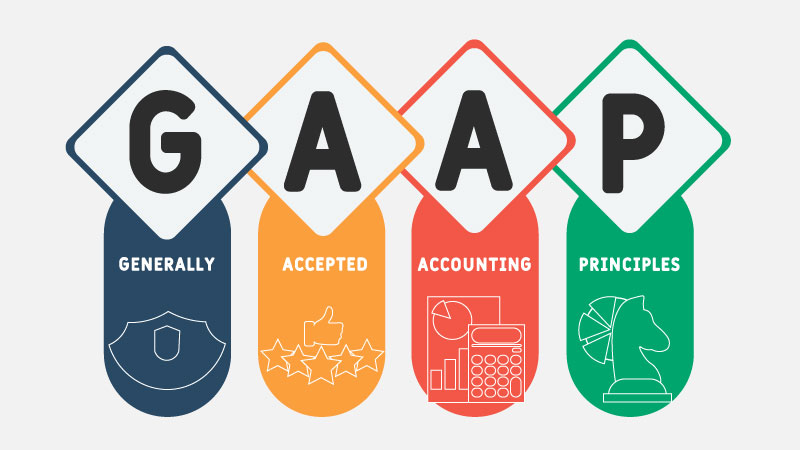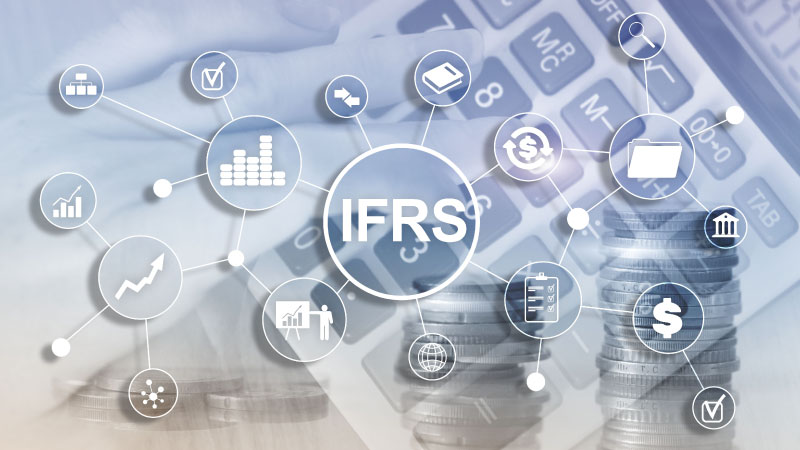GAAP vs. IFRS: Definition, Differences & Similarities

Accounting standards, or systems of accounting, are basically guidelines and regulations issued by governing bodies. They direct how an organization records finances, show its financial statements, and account for depreciation, amortization, and inventory.
The main objective of accounting standards is to disclose a company’s financial health to investors, creditors, lenders, contributors, and other key stakeholders, which helps those parties make strategic business decisions and invest in new opportunities.
Global accounting standards are dominated by two financial reporting frameworks: the International Financial Reporting Standard (IFRS) and the US Generally Accepted Accounting Principles (US GAAP).
Though these two frameworks share many similarities, their differences become apparent when GAAP users attempt to integrate with, report to, or negotiate with IFRS users.
The following sections outline how US GAAP and IFRS are similar to each other and how they significantly diverge.
What Is GAAP?
GAAP, also known as US GAAP, is a set of guidelines regulated by the Financial Accounting Standards Board (FASB) and adopted by the Security and Exchange Commission (SEC) in the USA. All domestic public companies based in the US must adhere to the US GAAP system of accounting.
GAAP regulates a broad range of accounting concerns, including revenue, expenses, assets, liabilities, financial statement presentation, fair value, foreign currency, leases, business combinations, equity, derivatives and hedging, nonmonetary transactions, industry specific accounting and subsequent events.
The purpose of GAAP is to ensure a transparent and consistent method of accounting. It summarizes accounting records into a complete financial statement and provides a basis for competitive comparison between companies. Further, it helps investors to study the financial reports of companies and decide the course of their investments.
What Is IFRS?
The International Accounting Standards Board (IASB) introduced the International Financial Reporting Standards (IFRS) as a single set of high-quality, comprehensible, and enforceable. Accounting and disclosure standards, that would be accepted worldwide.
The IFRS standard was established to create a common financial language that could be easily understood by auditors, government regulators, investors and any other third party, across borders.
IFRS regulates a wide array of accounting concerns, such as income tax, investment in associates, financial statement presentation, revenue recognition, borrowing costs, intangible assets, foreign exchange rates, employee benefits, retirement benefit plans, inventories, operating segments, fixed assets, business combinations, leases, industry specific accounting (agriculture), operating segments and subsequent events.
These standards were drafted to bring consistency to accounting language, implementations, and disclosures, and to help businesses and investors carry out informed financial analysis and make sound decisions, irrespective of their geographical locations.
Currently, the IFRS principle is being adopted by 167 countries around the world, including China, India, Japan, UAE, Netherlands, Italy, and Germany.
However, in the case of the USA, IFRS standards are permitted for use by foreign companies only. According to a report published by IFRS Foundation, more than 500 foreign SEC registrants, with a worldwide market capitalization of US$7 trillion, use the IFRS Standards in their US filings.
Differences between IFRS and GAAP
IFRS and GAAP differ in several ways, as outlined below.
IFRS vs. GAAP: Treatment Of Inventory
A prime difference between GAAP and IFRS is in how they account for inventory expenses. If you’re using GAAP, you can choose either the LIFO (Last in First out) or FIFO (First in First out) method for calculating inventory. Whereas IFRS only allows the use of FIFO, and the LIFO method is strictly prohibited.
One of the reasons IFRS does not support LIFO is that it’s impossible to achieve accurate inventory flow using this method. This may result in an inaccurate income amount that does not paint an accurate picture. The GAAP standard gives organizations the flexibility of choosing the method is most convenient.
IFRS vs. GAAP: Rules vs. Principles
IFRS and GAAP differ in how much flexibility they allow when interpreting accounting rules. IFRS allows organizations flexibility to follow and interpret their guidelines based on their understanding and judgment. GAAP, on the other hand, offers no room for interpretation; The norms and procedures it outlines must be followed to the letter. This policy prevents organizations from creating exceptions that they can leverage to increase their profits.
IFRS vs. GAAP: Revenue Recognition
GAAP and IFRS standards also differ in when they allow revenue to be officially recognized, with IFRS taking a more liberal approach.
GAAP standards follow specific protocols that businesses across industries need to follow to recognize revenue. According to GAAP, an organization cannot recognize revenue until goods or services are exchanged between it and the buyer. They also need to keep in mind the specific rules governing their industry.
On the other hand, IFRS principles allow an organization to recognize revenue as soon as it delivers value. They group revenue transactions into four categories: goods sales, construction contracts, service provisions, and asset utilization of other entities.
IFRS vs. GAAP: Write Downs
GAAP standards require organizations to write down the market value of their fixed or inventory assets, and this write-down amount cannot be reversed even if the asset’s market value increases over time.
In contrast, IFRS allows the reversal of an asset’s value when its price increases.
Therefore, unlike IFRS, the GAAP mandate may lead to inaccuracies since it doesn’t reflect the positive changes in the market value of assets.
IFRS vs. GAAP: Development Costs
GAAP mandates that organizations charge development costs as incurred expenses.
However, IFRS gives organizations the flexibility to classify costs as capitalized and amortized over time. This approach is beneficial since it leads to cost deferments that organizations can list as expenses.
IFRS vs. GAAP: Liabilities
GAAP’s accounting standards allow organizations to classify assets into two types for financial reporting purposes: current and non-current liabilities.
How assets are classified depends on how much time the organization requires to clear the debt. Debts with a repayment period of 12 months are considered current liabilities. When the repayment period exceeds 12 months, assets are considered long-term liabilities.
IFRS does not make any distinction between liability types. Thus, long- and short-term liabilities remain grouped when using their standards.
IFRS vs. GAAP: Valuation of Assets
Several market factors can affect the cost of assets. In some cases, market factors will lead to a decline in the asset value below its current worth. Organizations can classify it as a loss of impairment. However, an asset’s value can increase after recognizing loss if the factors causing a decline do not exist anymore.
GAAP protocols do not allow the asset value to increase after the impairment. Organizations that follow IFRS standards can re-evaluate the asset value and adjust it for depreciation.
IFRS vs. GAAP: Balance Sheet
Balance sheets differ between GAAP and IFRS companies. For example, current assets are displayed first in GAAP, while IFRS reports begin with non-current assets.
Plus, the IFRS and GAAP standards follow different approaches for ordering categories.
IFRS does not prioritize liquid accounts in balance sheet lists, so the least liquid assets are listed first, followed by the most liquid ones. Non-current accounts show first, then current assets, followed by owner equity, non-current liabilities, and current liabilities.
GAAP is the opposite, as assets are listed based on their liquidity, with the most liquid accounts displaying first. The first item will be current assets, followed by non-current assets, then current liabilities. Assets are listed at the beginning to make their conversion to cash more convenient.
IFRS vs. GAAP: Cash Flow Statement
An organization’s approach to preparing cash flow statements depends on whether they’ve adopted GAAP or IFRS. According to GAAP, interest paid and received should be part of operating activities. Conversely, IFRS offers organizations the flexibility to classify interest however they feel is appropriate.
IFRS allows interest paid to be placed in the financing or operating section of cash flow statements. Interest received can be included under operating or investing. The same principle applies to dividends.
GAAP mandates that dividends paid are to be classified under financing and dividends received under operating.
Similarities Between IFRS and GAAP
While there are several differences between GAAP and IFRS principles, there are some similarities as well. The overall framework for accounting and finance has a similar structure for both GAAP and IFRS. It includes the objectives, elements, and accounting characteristics.
Both standards use statements of cash flows, balance sheets, and income statements. They also offer the same guidelines when organizations deal with cash and cash equivalents. Plus, their preparation of financial statements follows the same accrued-based approach, and both can recognize revenue when it is realizable.
Frequently Asked Questions (FAQs)
Which is better – IFRS or GAAP?
There is no clear winner as everything depends on the intended use. GAAP offers a rules-based scenario, while IFRS is more about principles. IFRS will work for organizations looking to capture their transactions more accurately. GAAP is better suited for US-based businesses that need to meet the country’s compliance norms and regulations.
Which countries use GAAP vs. IFRS?
The GAAP standards are used in the US, as US organizations need to follow local compliance measures. Meanwhile, IFRS is used by over 150+ countries worldwide, spanning Europe, Asia, and South America.
How are GAAP and IFRS similar?
Despite several differences, there are some similarities between IFRS and GAAP. These include the use of a balance sheet, cash flow statements, and income statements. Both principles offer the same functionality to organizations dealing with cash and cash equivalent.
Why does the US not use IFRS?
One of the primary reasons the US does not use IFRS is because the Securities and Exchange Commission (SEC) doesn’t support that standard. They want to protect the interests of investors who have resisted adopting IFRS. SEC believes IFRS lacks consistency and does not support addressing smaller reporting issues.
The SEC feels that GAAP offers a better framework for financial and accounting reporting. They observe that IFRS’s flexibility leaves things open to interpretation and judgment, and may not promote a standard and consistent framework for reporting financials.
Can a US company use IFRS?
Domestic and publicly listed companies in the US cannot use IFRS. They are obligated to adopt and follow GAAP standards for accounting and financial reporting. Organizations with foreign SEC registrants can, however, use IFRS; over 500 such companies in the US use IFRS standards.
Does Canada use IFRS or GAAP?
Domestic public companies in Canada are required to use IFRS standards. However, a Canadian organization also filing in the United States is permitted to use US GAAP. Further, if a foreign company in Canada is a US SEC issuer, it may use US GAAP.
Why is GAAP better than IFRS?
Some feel that GAAP offers a better framework than IFRS because it is more rule-based, while IFRS is based on principles, and is therefore too flexible and subject to interpretation. GAAP requires organizations to follow rules that govern their industry. IFRS, on the other hand, allows businesses to use their own judgment to arrive at conclusions.









